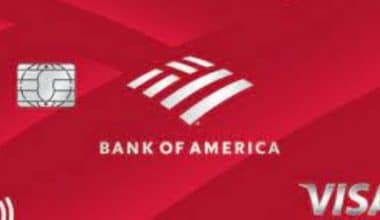Your project plan is built on the results of the feasibility study or analysis. This is so that the feasibility analysis can figure out whether or not your idea will work. This is accomplished by reviewing technical, economic, legal, operational, and time feasibility concerns. Read along to learn more about market feasibility, the five elements of the feasibility study, and the benefits.
What is Feasibility Study?
A feasibility study evaluates the viability of a suggested plan or project. The viability of a project is examined in a feasibility study to ascertain its likelihood of success. The analysis is intended to uncover possible concerns and challenges that might develop when the project is being pursued.
Project managers must decide if they have enough of the appropriate people, money, and technology as part of the feasibility study. The return on investment must also be determined, whether it is expressed as a monetary profit or as a benefit to society, as in the case of a nonprofit enterprise.
A cash flow analysis of the project’s revenue generation and operating expenses may be part of the feasibility study. To ascertain whether the profit will be sufficient to balance off the danger of undertaking the enterprise, a risk assessment must also be done.
What Are the 4 Types of Feasibility Studies?
Here are the 4 types of feasibility studies:
- Technical: A list of the necessary hardware, software, and labor to make them function.
- Financial: A projection of the project’s total cost and predicted return.
- Market: A study of the industry, competition, consumer demand, sales predictions, and growth expectations as well as the market for the good or service under consideration.
- Organizational: A description of the required management team and organizational structure
Who Conducts a Feasibility Study?
A group of senior managers from the company might carry out a feasibility study. They might also hire a consultant if they don’t know how to do the assignment or don’t have enough time.
What Is the Main Objective of a Feasibility Study?
The goal of a feasibility study is to assist decision-makers in determining the likelihood that a proposed project or investment will be successful. It lists both the known expenses and the anticipated advantages.
When it comes to business, “success” is defined as when the profit outweighs the expense. Success at a nonprofit organization may be assessed in numerous ways. The benefits to the community that a project serves could make up for its expense.
What Is Included in a Feasibility Study Report?
After the preliminary due diligence is over, the real work starts. Usually included in a feasibility study are the following elements:
#1. Executive summary
Write a narrative outlining the specifics of the project, product, service, plan, or business.
#2. Technology-related Factors
What will it require, inquire? Have you got it? Can you get it if not? What is the price?
#3. Existing Marketplace
Analyze the current markets for the product, service, plan, or business on both a local and national level. Describe your marketing approach in detail.
#4. Required Personnel
What kind of human resources are required for this project? An organizational chart should be created.
#5. Schedule and Timeline
Include key interim milestones for the project’s completion date in the schedule and timetable.
#6. Conclusions and Suggestions
Divide technology, marketing, organization, and finances into smaller groups.
Also, finances for the project.
What Are the Steps in a Feasibility Study?
An initial analysis is the first step of a feasibility study. The preparation of a business plan is followed by stakeholder interviews and market analysis. To determine whether anything is initially a “go” or a “no-go,” all of this data is analyzed.
The actual study can start once it’s approved. This involves establishing the necessary human resources, project timetable, and funding needs as well as listing the technological factors, researching the market, describing the marketing plan, and so on.
What is Market Feasibility?
Market feasibility studies are reports that aid companies in determining their chances of success. These studies examine the market, the competition, and other factors.
What Are the Five Elements of the Feasibility Study?
The following elements are the five elements of the feasibility study:
#1. The Project Scope
The first step is to precisely define the business issue or opportunity. The project’s scope should be concise and well-defined. Make sure to define the business elements as well, such as project participants and end users, who may be directly or indirectly impacted.
#2. The Current Analysis
The current technique of implementation, such as a new product or system, is evaluated using this type of analysis. You can learn about the advantages and disadvantages of the existing strategy through this analysis. You can save time and money by conducting a current analysis and determining the advantages and disadvantages of your present system or product.
#3. The Requirements
Depending on the goal of your project, you will need to outline your needs. For example, the requirements for a product will be defined very differently than the requirements for an information system. In a feasibility study, it matters a lot how precisely you specify your requirements.
#4. The Approach
The following step is for you to select the suggested plan of action or solution to satisfy your needs. You can weigh your options before settling on the most suitable course of action.
- Does the approach meet my requirements?
- Is the approach taken a practical and viable solution?
#5. Evaluation
This component will evaluate the chosen approach’s cost-effectiveness and the project’s expected overall cost. For comparison, other options will also be estimated. An evaluation and cost summary that includes a return on investment, cost/benefit analysis, etc. will be created once the project’s overall cost has been determined.
Finally, a feasibility study incorporating all the aforementioned components will be put together and formally evaluated. The review will be utilized to decide on the project and to confirm the feasibility study’s accuracy. You have the option to accept, reject, or even modify the study at this point before making a choice. Ensure that everyone involved signs the feasibility study report if it is accepted.
Benefits of a Feasibility Study
Feasibility studies have a number of benefits, including assisting project managers in weighing the advantages and disadvantages of starting a project before devoting a considerable amount of time and money to it.
Feasibility studies can also give the management of a company vital information that might keep them from embarking on a risky business initiative.
Such research aids businesses in planning their future expansion. They will have better knowledge about the market, the competition, potential challenges, and how they will operate.
One of the benefits of a feasibility study is that it helps persuade lenders and investors that funding a specific project or company is a smart move.
7 Steps To Do a Feasibility Study
Following the right steps while conducting a feasibility study is very important. Here are seven steps you need to take to carry out a very effective feasibility study:
#1. Conduct a Preliminary Analysis
Outline your project plan first. You should concentrate on an unmet need, a market with a shortage of products, and whether the good or service has a clear advantage. Afterward, you must decide if the feasibility factors are too high to overcome (i.e. too expensive, unable to effectively market, etc.)
#2. Prepare a Projected Income Statement
This stage also necessitates going backward. Start by estimating the project’s revenue, then determine the amount of project money required to reach that objective. An income statement’s foundation is established by this. Here, factors to consider include the services that are necessary and their associated costs, any changes to revenues, such as reimbursements, etc.
#3. Conduct a Market Survey, or Perform Market Research
Your feasibility study’s success depends on this step, so give your market analysis as much attention as you can. It is recommended to hire an outside company to complete it if your corporation lacks the means to do so due to its importance.
The market study will provide you with the clearest image possible of the project’s potential earnings and return on investment. Some factors to think about include the market’s geographic influence, demographics, competitor analysis, market value, your portion of the market, and whether the market is available for expansion (that is, in response to your offer).
#4. Plan Business Organization and Operations
It is time to build up the organization and operations of the intended project to fulfill its technical, operational, economic, and legal feasibility aspects after the foundational work of the prior steps has been completed. This is not a trivial, broad-brush project. It should be comprehensive and contain startup expenses, fixed expenses, and operating costs.
These expenses cover items like machinery, marketing strategies, real estate, staff, supplier availability, overhead, etc.
#5. Prepare an Opening Day Balance Sheet
This contains an assessment of the assets and liabilities, which must be as precise as feasible. Make a list of the necessary items, sources, costs, and financing options. Liabilities include items like financing for assets and accounts receivables, and leasing or buying of land, buildings, and equipment.
#6. Review and Analyze All Data
While each of these procedures is critical, the evaluation and analysis are crucial in ensuring that everything is in order and that nothing needs to be adjusted or changed. Therefore, pause for a moment and review your work one last time.
Review your prior actions, such as the income statement, and compare them to your liabilities and expenses. Is it still plausible? Additionally, now is the time to consider risks, analyze and manage them, and create any necessary backup plans.
#7. Make a Go/No-Go Decision
The time has come for you to decide if the project is feasible or not. Although it appears straightforward, all the preceding processes have led to this choice-making stage. Before making that binary decision, you should also think about whether the commitment is worthwhile in terms of time, money, and effort as well as whether it is consistent with the organization’s long-term objectives and strategic goals.
What Is a Feasibility Report?
Therefore, what we are eventually developing and delivering is a feasibility report. Therefore, consider this to be a template for that report.
Giving it an executive summary of the business opportunity you’re considering and a description of the good or service is what you’re going to do.
You should examine many technological factors. What sort of technology are you intending to employ? Will you develop the technology?
What kind of marketplace exists for goods and services, you should be able to pinpoint the precise market you intend to serve. What marketing approach will you employ to specifically target the market, too?
Who are the individuals needed to supply the good or service, as well as to provide support?
In order to have milestones and know when we will start recovering part of the financing, we also want to know the calendar so that we can make sure that as we create things and spend money, we are starting to earn money to pay for them. Again, this connects to the financial forecasts.
Finally, you’ll provide your conclusions and suggestions in this report.
How a Market Feasibility Study Differs From a Marketing Plan
Feasibility studies examine how something operates, whether it will function, and whether there are any possible issues. They are performed on concepts, campaigns, products, processes, and entire enterprises. Feasibility studies are evaluation tools, not just documents you use to try to pitch investors on your venture. They should evaluate many possible business scenarios and weigh the advantages and disadvantages of each.
Based on feasibility study findings, a marketing plan details particular ideas, methods, and campaigns that are meant to be implemented. Consider market feasibility studies as a logistical study and marketing plans as a detailed, well-thought-out plan of action.
How To Identify Potential Customers, Clients, and Contract Sources
Your small business market feasibility research should also include a descriptive section. A list of your present customers, clients, and contracts, as well as any potential new or renewed contracts, should be included in your potential customers, clients, and contract sources. A list of government contracting agencies, along with a brief description of the kinds of contracts they seek and how those contracts relate to your industry, should be noted. You should also make a note of any sales leads that could result in the acquisition of new customers or clients. Other market segments you should consider targeting include senior citizens, working mothers, organizations, specialty retailers, etc.
Depending on the nature of your business, it might not be feasible to directly tie a certain market to a certain quantity of money. Still, you can at least make an educated guess as to what proportion of your overall revenue will come from each source.
What Does Feasibility Mean in Business?
Feasibility analysis entails carefully examining your new business concept to ascertain its viability. Any preliminary study you’ve already done can be built upon using this.
What Is the Purpose of Feasibility?
Assessing the financial viability of developed land and determining whether it will be successful or fail is the prime purpose of a feasibility study.
Final Thoughts
A feasibility study is a thorough evaluation that takes into account all of the important factors of a proposed project to ascertain the chances of success.
Return on investment, or whether the project will also make enough money to cover the investment, is often used to determine success in business. On the plus or negative side, many additional significant aspects, such as the impact on the surrounding neighborhood and the environment, can be found. Project managers can use feasibility studies to assess the risks and rewards of pursuing a course of action, but there are still a number of things to think about before taking any action.
Related Articles
- BUSINESS PLAN: Examples and Template for Startup
- How To Make Your Ideas Work. Part 3
- HOW TO GET INTO PROJECT MANAGEMENT: Definition, Guide, and Requirement
- TOP MANAGEMENT SKILLS With Examples






